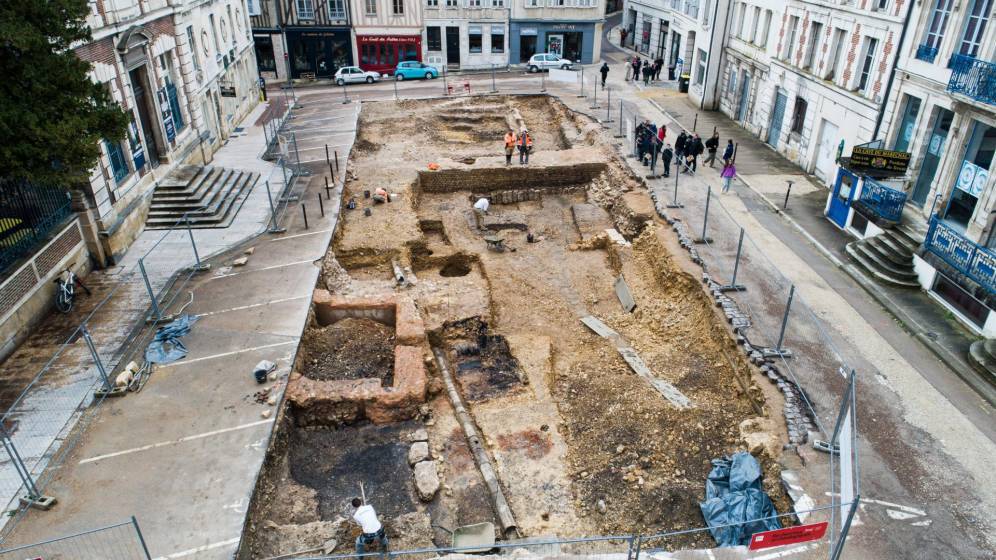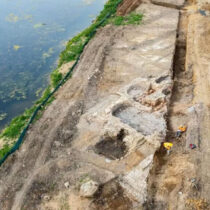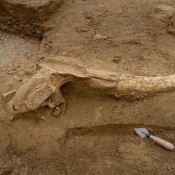Since February 2024, Inrap archaeologists have been conducting research on Place du Maréchal Leclerc in Auxerre prior to its landscaping redevelopment. These first excavations in the historic center of the city trace the evolution of this urban district from Roman antiquity until the 19th century. Among the remains, the fortified enclosure (castrum) of the 4th century is the witness of the refoundation of the city of Autessiodurum and its accession to the rank of capital of the new City of Auxerre. This fortification is installed here on a funerary area of the High Empire (1st-3rd century) until then unknown to Auxerre. If this necropolis is part of the Gallo-Roman traditions, it has many characteristics that distinguish it from its contemporaries.
A particular population, associated gestures
According to ancient rules, the necropoles are located outside the cities. On the periphery of these funeral areas, spaces can be dedicated to very young children (stillbirths and individuals aged a few months) whose mortality rate is high at this time. The excavation carried out in Auxerre explores one of these specific areas. Its very good state of conservation offers archaeologists the opportunity to observe the gestures intended for this very singular population. Ceramic tableware is broken near burials on circulation levels, their contents being intended for the dead and the gods. In order to protect these young deceased, objects intended for protection in the afterlife (called «apotropaic» or «prophylactic») accompany them, like beads, coins etc. A miniature ceramic cup was also placed at the head of a young child.
Various funeral practices
This necropolis testifies to a wide variety of practices on the same funerary space. The majority of the burials are in fetal position although some are on the back. It is the containers of toddlers that show the most diversity: they are arranged in tiles (imbrex), ceramics, wooden coffins, tree barks, textiles and other flexible envelopes. Sometimes the bodies are simply covered with fragments of amphora to protect them. In one case, a stone engraved with a rosette is reused to mark the tomb. In addition, up to eight stages were observed during the burial of these very young children, proof of the complexity of funeral gestures. These were therefore not rejected; on the contrary some burials testify to significant attention.
Density and superimposition of tombs
The very high density of graves and their superimposition make it possible to study a very large number of burials and other funeral practices associated with toddlers during the 1st to 3rd centuries. Up to five levels of tombs have been observed, which, in the state of research, is unique in the Gallo-Roman world where the integrity of the tomb must be preserved. In Auxerre, however, some tombs have been destroyed in order to build new ones, which may be related to a problem of available space but also to the very status of these very young children, not always perceived as individuals in their own right. The excavation of Auxerre, as recently that of Narbonne and others, brings a lot of new knowledge and questions about funeral practices associated with very young children and stillborn in Antiquity.





